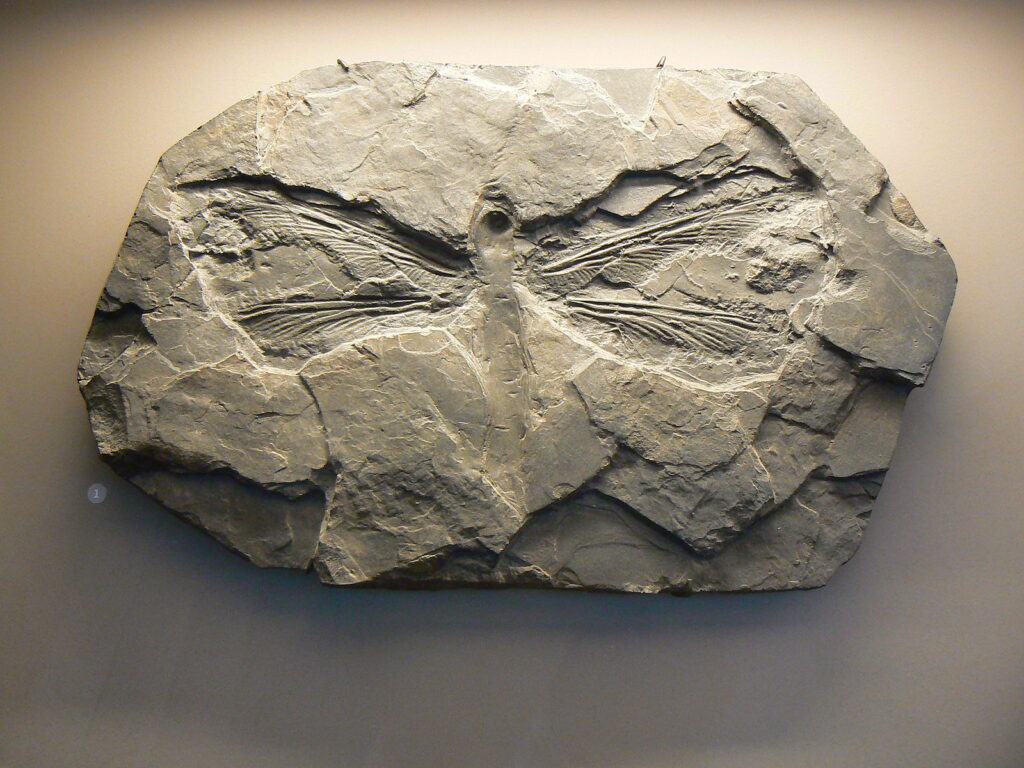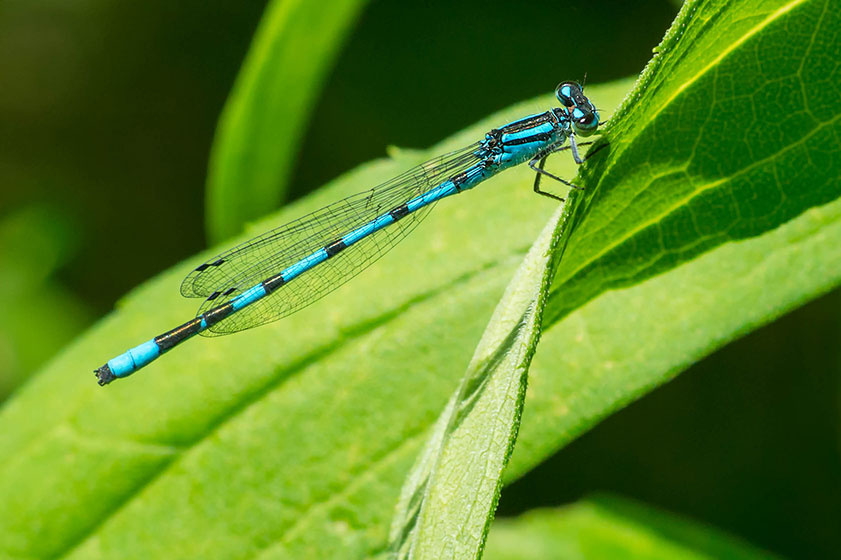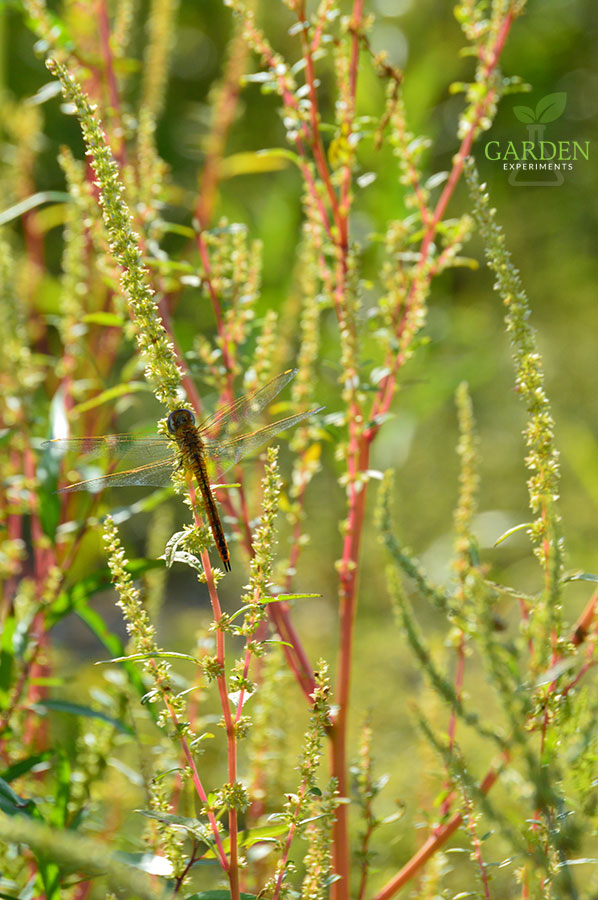With a flash of color and blur of movement, dragonflies zip through the air, often catching another insect in mid-flight. Their amazing flying abilities, those large eyes, and fragile wings have always fascinated me.
These amazing insects are often brightly colored, though some are more colored to blend in with their surroundings. This blue/green dragonfly was resting near a lake in Vicksburg, Mississippi.

Dragonflies Have Ancient Roots
Dragonflies have been around for a very long time. Their ancestors, genus Meganeura, can be found in the fossil record approximately 300 million years ago. These extinct insects were about the same size as a crow and had an incredible wingspan of up to 24 inches.

Today’s dragonflies are much smaller, ranging from 1 to 5 inches in length with a wingspan of about 2 to 6 inches.
Where Are Dragonflies?
Just about anywhere you travel, you might encounter a dragonfly. There are over 5,000 known species of dragonflies and they can be found on all continents except Antarctica.
There are 464 species of damselflies (a close relative to the dragonfly) and dragonflies in North America, about twenty percent of which are at risk of extinction due to water pollution and the breaking up of water systems, largely due to human development. There are 316 species found in the United States.
How Far Do Dragonflies Migrate?
Many dragonflies migrate seasonally. Some species will travel a few miles every few days while some may travel as much as a hundred miles in one day. Some dragonfly species even migrate over oceans. The globe skimmer (Pantala flavescens) has the longest migration route of any insect in the world. It travels over 11,000 miles (1800 km).
Watch the TED talk of Dr. Charles Anderson, who discovered the long migration route of the globe skimmer dragonfly below.
Dragonfly Life Cycle
Freshwater is vital to the life cycle of the dragonfly. They lay their eggs in or adjacent to ponds, wetlands, or slow-moving streams. Male dragonflies will perch on a tall plant and aggressively defend their territory that includes breeding areas. As the eggs hatch, the larval stage of the dragonfly will seek out water.
Dragonflies spend most of their lives in freshwater in the larval stage as nymphs. For some dragonfly species, this stage can last as long as 5 years. The adult stage of the dragonfly is much shorter than the nymph stage.
Dragonfly nymphs are predators, feeding on aquatic insects, mosquito larvae, worms, tadpoles, fish, and other small aquatic organisms. In turn, the nymphs are food for fish, frogs, water bugs, water shrews, water beetles, birds, toads, newts, and other amphibians.
Dragonflies in the adult stage are also predators and feed on flying insects including biting flies, mayflies, and mosquitoes. Birds, lizards, bats, and spiders catch and eat adult dragonflies. These flying insects are an important part of the food cycle in freshwater environments.
Learn more about the life cycle of the dragonfly here: https://british-dragonflies.org.uk/content/biology-ecology
Using Dragonflies as an Indicator of the Health of an Aquatic Environment
Scientists use the presence or absence of dragonfly nymphs in a pond or lake as an indicator of the health of the body of water. If the water is polluted with chemicals including fertilizers, dragonfly nymphs won’t be able to survive. If the water is clean and the aquatic environment healthy, there will be nymphs in the water. It’s a pretty neat way to get a quick glimpse as to the health of a pond or lake.
Dragonflies Eat Mosquitoes
Controlling Mosquitoes with Dragonfly Nymphs
Since both the nymph and adult stages of the dragonfly feed on mosquitoes, researchers have looked into their ability to be used a biological control of disease carrying mosquitoes like Aedes aegypti, the mosquito that carries yellow fever and Zika.
The results of several studies indicate that different species of dragonfly nymphs can act as a biological control for mosquito larvae – showing a significantly lower mosquito larval density when dragonfly nymphs were present. How well this works on a landscape scale or under less-controlled environments is unclear, but it is something that scientists continue to investigate.
The Aerial Acrobatics of A Dragonfly
Whether backwards, forwards, up, down, left, right, or hovering, dragonflies can perform aerial acrobatics and all at speeds of up to 34 mph. They have a lot of flight power for such a small insect; scientists have recorded forces of 4G when flying in a straight line and 9G when executing turns for their flight.
Dragonflies are Very Skilled Predators
If lunch is nearby, a dragonfly is probably going to catch it. They catch their pretty while flying, using their feet which they use to create a basket shape which allows them to clasp their prey.
Scientists recently discovered that dragonflies can actually predict the movement of their prey – making them amazing hunters.
The large compound eyes of a dragonfly are made up of 30,000 optical units (ommatidia) each, all which are angled slightly differently – enabling it to see nearly everything around it. Dragonflies can also see ultraviolet light and they are able to see fast-moving objects almost two times better than a human can. These features make them deadly predators of flying insects.
Why Do Dragonflies Swarm?
One morning, I awoke to see dozens of dragonflies hovering over my lawn. They were flying back and forth for just a few hours before they disappeared. This, I later learned, was a dragonfly swarm.
Dragonflies form two different kinds of swarms – one for migration purposes and one for feeding. If it’s a feeding swarm, they will be only a few feet from the ground, flying back and forth over the same area. If it’s migratory swarm, they will be flying much higher off of the ground and all be heading in one single direction. Migratory swarms often occur in May through October (depending on the part of the world you are in).
Is it a Dragonfly or a Damselfly?
Dragonflies and damselflies are both in the order Odonata and are similar in appearance. The best way to tell them apart is to look how they hold their wings when they are resting. Dragonflies will hold their wings flat and outstretched — perpendicular to their body. Damselflies will fold up their wings close to their bodies (on their backs).

Want to Learn More about Dragonflies?
Check out these additional Resources, some of which were used as sources for this article.
- https://www.theguardian.com/science/punctuated-equilibrium/2011/apr/06/1
- https://en.wikipedia.org/wiki/Dragonfly
- https://xerces.org/ecology-and-conservation-of-dragonflies-and-damselflies/
- http://www.earthtimes.org/nature/dragonflies-indicator-species-environmental-health/2033/
- https://www.ncbi.nlm.nih.gov/pubmed/18378207
- https://www.ncbi.nlm.nih.gov/pubmed/6447358
- https://nature.mdc.mo.gov/discover-nature/field-guide/dragonfly-larvae
- https://books.google.com
- http://www.odonatacentral.org/index.php/PageAction.get/name/NADragonflies
- http://ngm.nationalgeographic.com/print/2006/04/dragonfly-mating/did-you-know-learn

